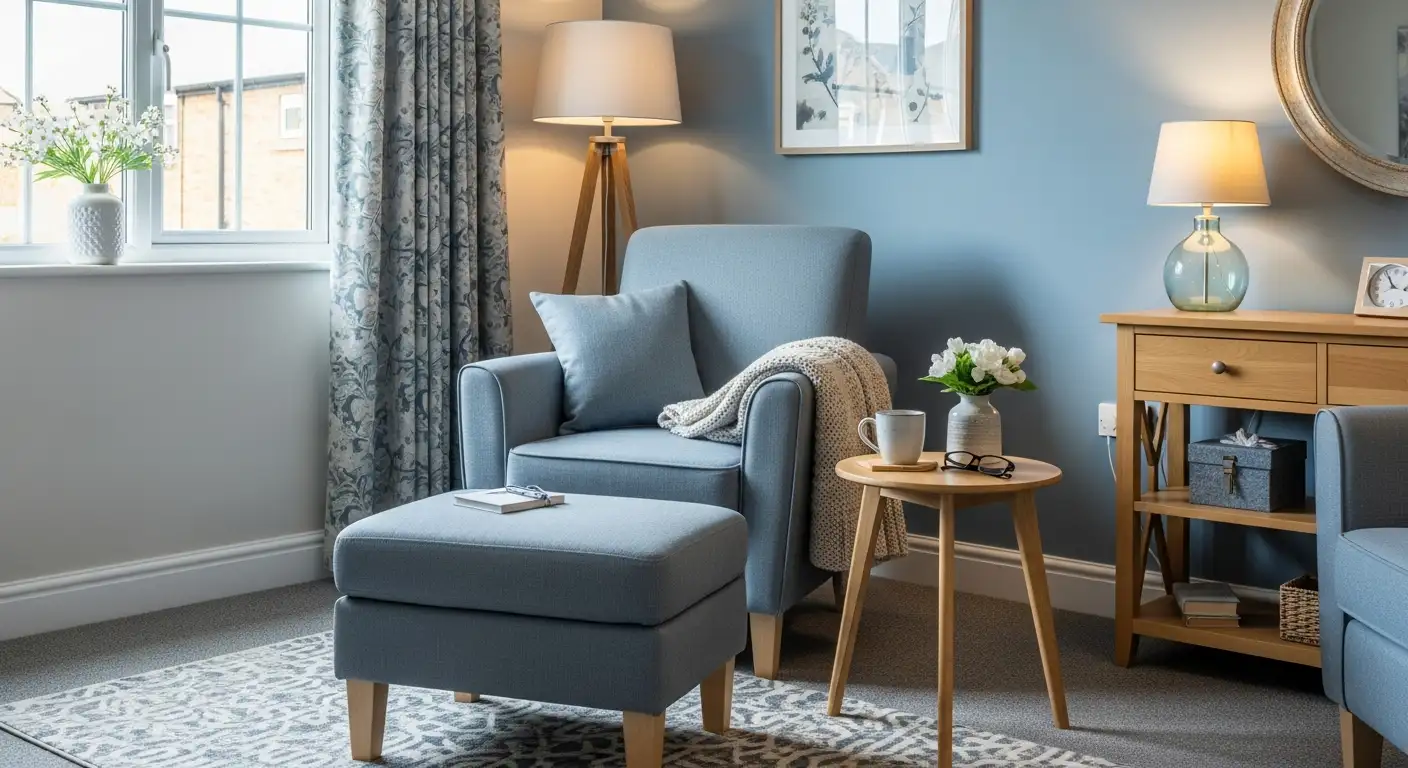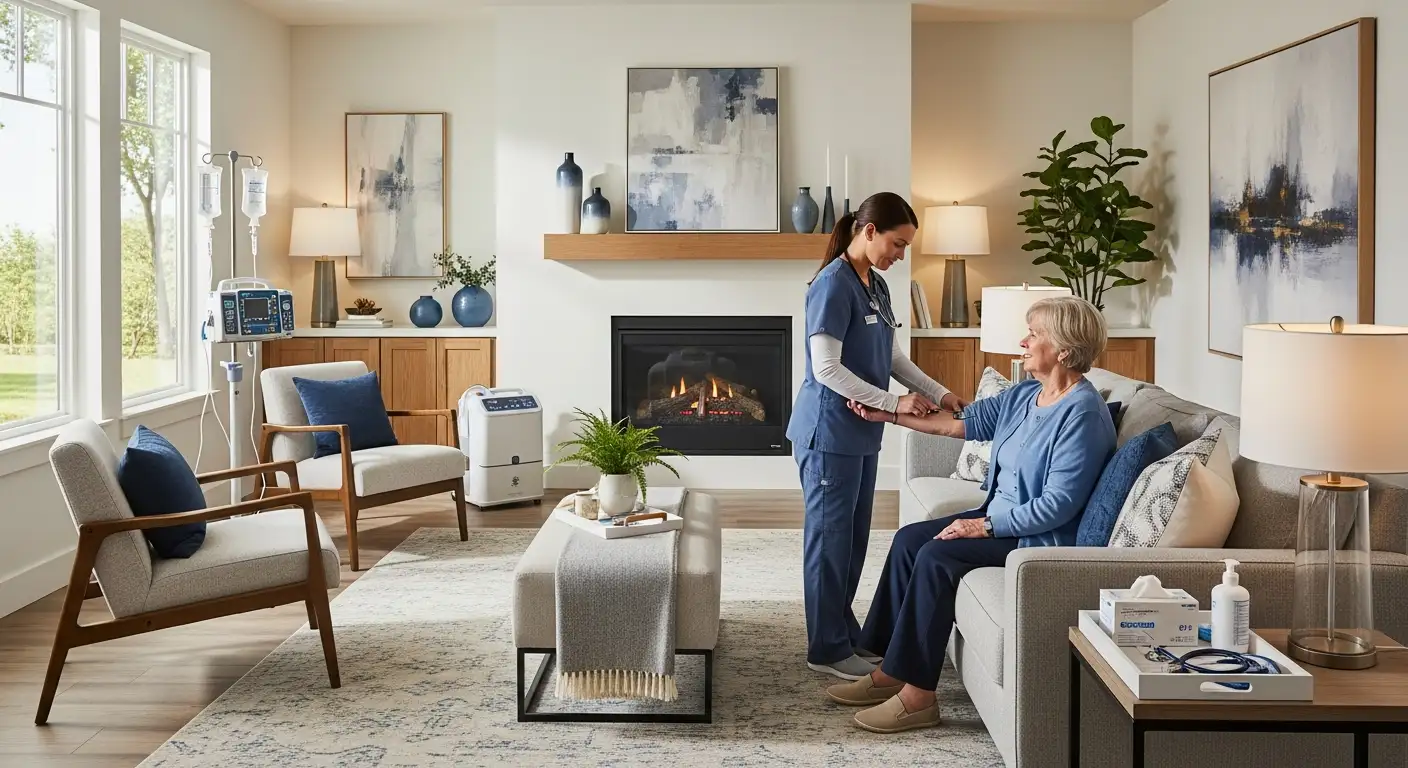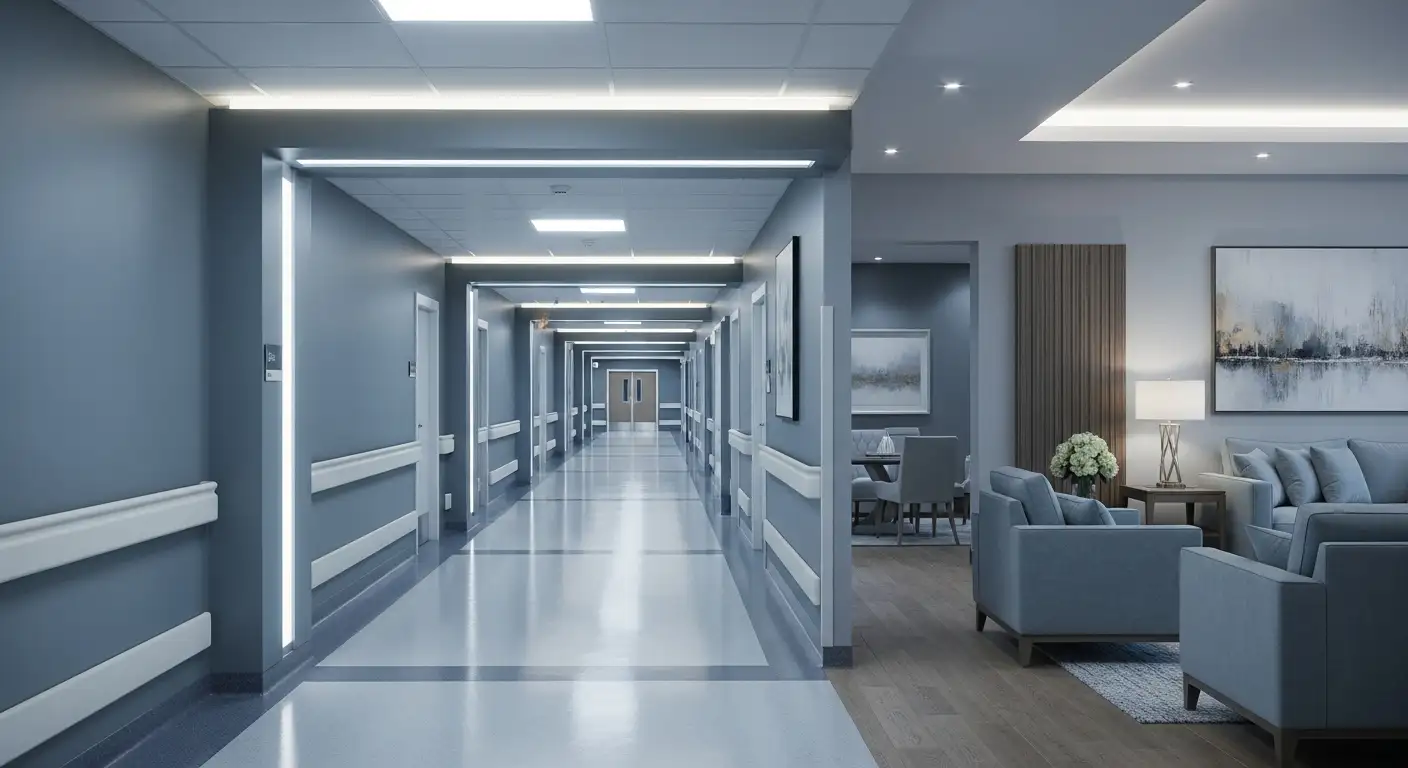Understanding Sleep Disorders in Seniors
Sleep disorders can significantly impact the quality of life for seniors, leading to various physical and cognitive health issues. Understanding the prevalence of sleep disorders in the elderly population and the impact of aging on sleep patterns is essential for addressing these concerns effectively.

Prevalence of Sleep Disorders
Sleep disorders are a common concern among older adults. Approximately 50 percent of people over 55 years old have difficulty falling asleep and maintaining a good night's rest. Insomnia, characterized by difficulties in falling asleep or staying asleep, is one of the most prevalent sleep disorders in the elderly population. It often coexists with medical, psychiatric, sleep, or neurological disorders [1].
Impact of Aging on Sleep Patterns
Aging can significantly affect sleep patterns. As individuals grow older, there are changes in sleep architecture, including decreased total sleep time, increased time spent awake during the night, and alterations in sleep stages. This can lead to difficulties in falling asleep, maintaining sleep, waking up tired, and experiencing daytime fatigue. Moreover, older adults may experience a shift in their circadian rhythm, resulting in earlier bedtimes and earlier wake-up times.
It is important to note that sleep disorders in seniors can be influenced by various factors, including medical conditions, medications, lifestyle habits, and the sleep environment. Identifying and addressing these factors is essential in effectively managing sleep disorders and promoting healthy sleep in older adults.
By recognizing the prevalence of sleep disorders in seniors and understanding the impact of aging on sleep patterns, healthcare professionals and caregivers can provide tailored interventions to improve sleep quality and overall well-being in the elderly population.
Common Sleep Issues in the Elderly
As individuals age, their sleep patterns and needs may change, leading to an increased risk of sleep disorders. Two common sleep issues experienced by seniors are insomnia and restless legs syndrome (RLS) with periodic limb movements.
Insomnia and its Variants
Insomnia is one of the most prevalent sleep disorders, particularly among older adults. It is characterized by difficulty falling asleep, staying asleep, or experiencing non-restorative sleep. Chronic insomnia affects approximately 57% of the elderly population in the United States, causing impaired quality of life and functioning, as well as significant healthcare costs.
Insomnia in seniors is often associated with other medical, psychiatric, sleep, or neurological disorders. It can result from a combination of factors, such as age-related changes in sleep architecture, medical conditions, medications, and lifestyle factors. Psychological and behavioral therapies are typically the initial treatment for insomnia in the elderly, with medication playing a supportive role when symptoms persist or patients cannot engage in cognitive behavioral therapies [3].
Pharmacotherapy options for insomnia in the elderly include orexin agonists, histamine receptor antagonists, non-benzodiazepine gamma-aminobutyric acid (GABA) receptor agonists, and benzodiazepines. Examples of FDA-approved drugs include suvorexant, low-dose doxepin, Z-drugs (eszopiclone, zolpidem, zaleplon), and benzodiazepines (triazolam, temazepam). The choice of hypnotic agent depends on the specific symptoms experienced by the individual, such as sleep-onset insomnia or sleep maintenance issues.
Restless Legs Syndrome (RLS) and Periodic Limb Movements
Restless Legs Syndrome (RLS) is a neurological disorder characterized by an irresistible urge to move the legs, often accompanied by uncomfortable sensations in the limbs. This condition can significantly disrupt sleep and affect the overall quality of life for seniors. Periodic Limb Movements (PLMs) are repetitive limb movements during sleep that can also lead to sleep disturbances.
The exact cause of RLS and PLMs is not fully understood, but factors such as iron deficiency, certain medications, and underlying medical conditions like kidney disease or diabetes may contribute to their development. Treatment options for RLS and PLMs include lifestyle modifications, such as regular exercise and avoiding triggers like caffeine, as well as medications to manage symptoms.
If seniors suspect they have RLS or PLMs, it is essential to consult with a healthcare professional for a proper diagnosis and personalized treatment plan. Identifying and addressing these sleep disorders can significantly improve sleep quality and overall well-being in the elderly population.
Factors Influencing Senior Sleep
When it comes to sleep disorders in seniors, there are various factors that can influence their sleep patterns. These factors can be categorized into medical conditions and medications, as well as lifestyle habits and the sleep environment.
Medical Conditions and Medications
Older individuals may experience disrupted sleep patterns due to various medical conditions or medications they are taking. Medical conditions such as chronic pain, anxiety disorders, bipolar disorder, thyroid disease, and depression can affect sleep in older adults, leading to trouble falling or staying asleep. These conditions may cause pain or sleep-disruptive symptoms, make them excessively sleepy during the day, or contribute to underlying sleep disorders.
In addition to medical conditions, certain medications commonly taken by seniors can impact their sleep. Medications that treat various health conditions may have side effects that affect sleep quality. For example, certain medications used to manage high blood pressure, heart disease, or respiratory disorders may contribute to sleep disturbances. It is important for seniors to discuss their medications with their healthcare provider to identify any potential sleep-related side effects and explore alternative options if necessary.
Lifestyle Habits and Sleep Environment
Lifestyle habits and the sleep environment play a significant role in the sleep patterns of older adults. Lack of physical activity and social isolation can contribute to sleep problems in seniors, impacting the normal sleep/wake cycle. Regular physical activity during the day and social interactions can help maintain a healthy sleep rhythm.
Creating a conducive sleep environment is crucial for seniors with sleep disorders. Factors such as excessive noise, uncomfortable bedding, excessive light, or an unsuitable room temperature can disrupt sleep. Seniors should aim to create a calm and comfortable sleep environment that promotes relaxation and restful sleep. This may involve using earplugs, investing in a comfortable mattress and pillows, using blackout curtains or an eye mask, and maintaining a cool and quiet bedroom.
To improve sleep, it is advised for seniors to relieve chronic pain, control medical conditions such as frequent urination, and treat depression. Establishing a relaxing bedtime routine can also help signal to the body that it is time to sleep. It is important to avoid relying on sleeping pills as a long-term solution, as they can lead to dependence and potentially worsen sleep problems over time.
By addressing medical conditions, optimizing medications, adopting healthy lifestyle habits, and creating a sleep-friendly environment, seniors can improve their sleep quality and overall well-being. It is recommended for seniors experiencing sleep disturbances to consult with their healthcare provider to determine the underlying causes and explore appropriate treatment options, which may include lifestyle changes or medical interventions.
Diagnosis and Treatment Approaches
When it comes to diagnosing and treating sleep disorders in seniors, various approaches are available to identify the underlying causes and provide effective management. In this section, we will explore two common methods: sleep studies and polysomnography, as well as cognitive behavioral therapy (CBT) and pharmacotherapy.
Sleep Studies and Polysomnography
Sleep studies, including polysomnography, are often recommended when primary sleep disorders such as sleep apnea or periodic limb movements in sleep (PLMS) are suspected. Polysomnography involves monitoring various physiological parameters during sleep, such as brain activity, eye movements, respiratory patterns, and heart rate. This comprehensive assessment helps clinicians evaluate sleep quality, identify sleep disorders, and tailor treatment plans accordingly.
During a sleep study, individuals spend a night at a sleep clinic or hospital while their sleep is monitored. Sensors and electrodes are placed on the scalp, face, chest, and legs to record the necessary data. The results obtained from the sleep study provide valuable insights into sleep architecture, breathing patterns, and the presence of any abnormalities. This information aids in the accurate diagnosis of sleep disorders and guides appropriate treatment decisions.
Cognitive Behavioral Therapy and Pharmacotherapy
Cognitive behavioral therapy for insomnia (CBT-I) is a highly effective non-pharmacological treatment approach for sleep disorders, including insomnia, in the elderly. CBT-I focuses on addressing the underlying psychological and behavioral factors contributing to sleep disturbances. It involves various techniques, such as sleep hygiene education, relaxation training, stimulus control therapy, and sleep restriction therapy.
CBT-I can be delivered through face-to-face therapy sessions or, for older patients who are computer savvy, via internet programs. In fact, a meta-analysis demonstrated that CBT-I using internet programs improved several sleep parameters and exhibited a high treatment adherence rate. This approach provides a convenient and accessible option for older adults seeking treatment for their sleep disorders.
In cases where symptoms persist or patients cannot engage in cognitive behavioral therapies, pharmacotherapy may be considered as an adjunctive treatment. The choice of pharmacological intervention depends on the specific sleep disorder and the symptoms experienced. Current drugs for insomnia in the elderly include orexin agonists, histamine receptor antagonists, non-benzodiazepine gamma-aminobutyric acid receptor agonists, and benzodiazepines [3].
It's important to note that the choice of a hypnotic agent should be based on the symptoms presented. For instance, ramelteon or short-acting Z-drugs may be suitable for addressing sleep-onset insomnia, while suvorexant or low-dose doxepin may be more appropriate for sleep maintenance issues [3]. It's crucial to consult with a healthcare professional who can assess the individual's specific needs and prescribe the most suitable treatment option.
By utilizing sleep studies, polysomnography, cognitive behavioral therapy, and pharmacotherapy, healthcare providers can diagnose sleep disorders in seniors accurately and develop comprehensive treatment plans tailored to their unique needs. These approaches aim to improve sleep quality, enhance overall well-being, and restore healthy sleep patterns for a restful night's sleep.
Sleep Hygiene for Better Rest
Establishing good sleep hygiene practices can be beneficial for seniors experiencing sleep issues. By incorporating certain habits and avoiding sleep disruptors and stimulants, older adults can improve their sleep quality and overall well-being.
Establishing Routines and Consistency
Consistency is key when it comes to sleep routines for seniors. According to Yale Medicine, establishing regular sleep and wake-up times can help correct sleep problems. Going to bed and waking up at the same times each day helps regulate the body's internal clock and promotes a more restful sleep.
Creating a calming bedtime routine can also signal to the body that it's time to wind down. This can include activities such as reading a book, taking a warm bath, or practicing relaxation techniques like deep breathing or meditation. By consistently following these routines, seniors can prepare their bodies for a restful night's sleep.
Avoiding Sleep Disruptors and Stimulants
Certain factors can disrupt sleep and make it more difficult for seniors to fall asleep or stay asleep. It's important to identify and avoid these sleep disruptors. Some common sleep disruptors and stimulants to avoid include:
- Caffeine: Seniors should limit their consumption of caffeine, especially in the late afternoon and evening. Caffeine can interfere with sleep and make it harder to fall asleep or stay asleep.
- Alcohol: While alcohol may initially make seniors feel drowsy, it can disrupt the sleep cycle and lead to fragmented and poor-quality sleep. It's best to avoid alcohol close to bedtime.
- Nicotine: Nicotine is a stimulant that can interfere with sleep. Seniors who smoke should try to quit, especially if they find that smoking affects their sleep quality.
- Daytime Napping: Seniors should avoid long or late afternoon naps, as they can interfere with nighttime sleep. If a nap is necessary, it's best to keep it short (around 20-30 minutes) and earlier in the day.
Creating a sleep-friendly environment is also essential for seniors. This includes keeping the bedroom quiet, dark, and cool, as well as using comfortable bedding and pillows. Seniors should consider using earplugs, eye masks, or white noise machines if needed to block out any disruptive sounds or light.
By establishing consistent routines and avoiding sleep disruptors and stimulants, seniors can improve their sleep hygiene and increase their chances of getting a good night's rest. However, it's important to note that individual sleep needs and preferences may vary, and consulting with a healthcare professional is recommended for personalized advice and guidance.
Promoting Healthy Sleep Habits
To improve sleep quality and address sleep disorders in seniors, it is essential to focus on promoting healthy sleep habits. This can be achieved through various approaches, including exercise and physical activity, as well as addressing underlying health conditions.
Exercise and Physical Activity
Engaging in regular exercise and physical activity can have a positive impact on sleep quality, especially for older adults. Aerobic activities, in particular, have been shown to promote more restful sleep and improve sleep duration in individuals with insomnia. Exercise releases chemicals in the body that contribute to better sleep, helping to regulate the sleep/wake cycle.
It is important for seniors to incorporate exercise into their daily routines. This can include activities such as walking, swimming, cycling, or participating in group exercise classes. Aim for at least 150 minutes of moderate-intensity aerobic activity per week, in addition to muscle-strengthening exercises on two or more days [6]. However, it is advisable to consult with a healthcare professional before starting any new exercise program.
Addressing Underlying Health Conditions
Underlying health conditions can significantly impact sleep patterns in seniors. Chronic pain, frequent urination, and sleep-disruptive symptoms from various medical conditions can disrupt sleep and contribute to sleep disorders. Addressing these health conditions is crucial for improving sleep quality.
Seniors should work closely with their healthcare providers to manage and treat any medical conditions that may be affecting their sleep. This may involve pain management strategies, such as physical therapy or medication, to alleviate discomfort. Treating conditions like depression or anxiety can also help improve sleep quality.
Maintaining a relaxing bedtime routine can further support healthy sleep. This may include creating a calm and comfortable sleep environment, practicing relaxation techniques, and establishing a consistent sleep schedule. Avoiding the use of sleeping pills is generally recommended, as dependence and worsening sleep problems can occur over time.
By incorporating exercise and physical activity into daily routines and addressing underlying health conditions, seniors can promote healthy sleep habits. It is important to remember that individual needs and circumstances may vary, so consulting with healthcare professionals is key to developing personalized strategies for better sleep.
References
- https://www.healthline.com/health/sleep/sleep-disorders-in-the-elderly
- https://www.yalemedicine.org/news/how-aging-affects-sleep
- https://pubmed.ncbi.nlm.nih.gov/30058034/
- https://www.mountsinai.org/health-library/diseases-conditions/sleep-disorders-in-the-elderly
- https://emedicine.medscape.com/article/292498-treatment
- https://www.helpguide.org/articles/sleep/how-to-sleep-well-as-you-age.htm



